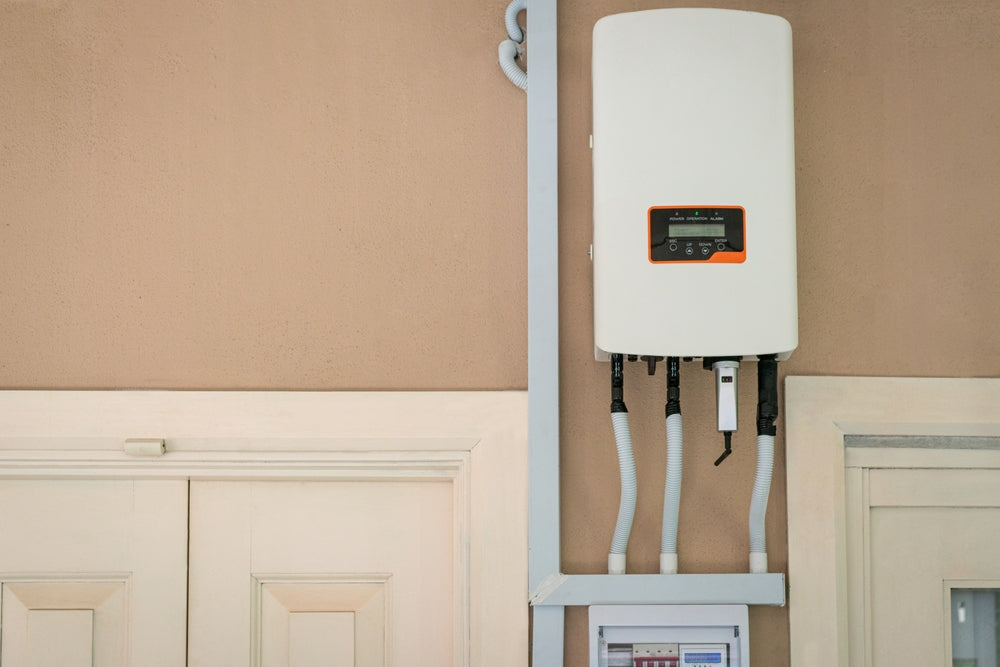
Understanding the Core of a Solar Power System
In the world of solar energy, two essential components often confuse homeowners and new solar users: solar batteries and solar inverters. While both are critical for a solar setup to function properly, they serve very different roles. To get the most out of your investment, it's important to understand how each one works and what it brings to the table.
Imagine a solar system as a team. The panels generate power, but that energy can't be used directly by your appliances. That’s where the solar inverter steps in. Meanwhile, if you want to save power for later—perhaps for use at night or during a power outage—that’s where solar batteries play their part. These two pieces work together, but they have distinct responsibilities.
The Role of Solar Inverters in a System
Let’s talk about solar inverters first. These devices are the bridge between the power generated by solar panels and the electricity used in your home. Solar panels generate direct current (DC), but your appliances use alternating current (AC). The inverter converts DC into AC, making solar energy usable.
There are several types of solar inverters, each serving a specific need. Solar hybrid inverters are among the most flexible—they handle solar energy, grid electricity, and battery storage all at once. They're ideal if you want to stay connected to the grid while also using batteries.
On the other hand, solar on grid inverters are designed for homes and businesses that are fully tied to the electrical grid. These are excellent for net metering setups, where you can export excess energy back to the grid. Finally, solar pump inverters are widely used in agriculture. They help run water pumps using solar energy, reducing fuel and electricity costs for farmers.
So, while solar hybrid inverters, solar on grid inverters, and solar pump inverters differ in their applications, they all share the same core purpose—converting solar power into usable electricity.
The Purpose of Solar Batteries
Now let’s shift focus to solar batteries. Their job is simple but vital—they store the extra energy your solar panels produce during the day so you can use it later. This is particularly helpful during nighttime, cloudy days, or blackouts.
A solar battery ensures energy independence. It’s what allows your home to run when the grid fails. In rural or off-grid areas, batteries are not a luxury—they're a necessity. Even in cities, solar batteries offer peace of mind and can help reduce reliance on the utility company.
Today’s solar batteries are more efficient, long-lasting, and smart. Many come with mobile apps that let you monitor usage, storage, and performance in real time. When paired with solar hybrid inverters, they form a seamless energy ecosystem.
Comparing How They Work
Although solar inverters and solar batteries are part of the same system, their functions do not overlap. They complement each other. The inverter acts like a translator—making solar power usable—while the battery is more like a bank, storing energy for future use.
If you had to pick just one to begin with, the solar inverter would be the starting point. After all, without converting DC to AC, you can't power your appliances at all. However, if your goal is to become more self-sufficient or to safeguard against outages, adding a battery makes a huge difference.
It’s worth noting that solar hybrid inverters often include built-in compatibility with batteries. That means you can start with just the inverter and panels, then add a battery later as your budget or needs grow.
Use Cases: When Do You Need Which?
When deciding between investing in a solar battery or an upgraded solar inverter, it helps to assess your specific energy needs.
For example:
-
If you live in an area with frequent blackouts, solar batteries are a smart choice.
-
If you're focused on saving money via net metering, solar on grid inverters are better suited.
-
If you're running a farm with irrigation systems, solar pump inverters will deliver the most value.
-
If you want flexibility and the option to expand later, solar hybrid inverters are ideal.
Each of these use cases requires a thoughtful look at how energy is produced, used, and stored. The right combination of components can lead to energy independence, lower bills, and reduced environmental impact.
Costs and Maintenance
When it comes to cost, solar inverters generally have a lower price tag compared to solar batteries. However, both represent a long-term investment with great returns. An efficient inverter can last up to 10–15 years, while modern lithium-ion batteries can last even longer with proper care.
Maintenance for inverters usually involves occasional cleaning and software updates. Batteries, on the other hand, require a bit more attention. You’ll want to monitor performance and ensure they aren’t exposed to extreme heat or cold.
That said, combining a reliable inverter—like a solar hybrid inverter—with a good battery can streamline energy management and cut down on maintenance time overall.
Making the Right Choice for Your Solar Journey
Choosing between a solar inverter and a solar battery isn’t always an either-or decision. In fact, most effective systems use both. The inverter ensures that the power from your solar panels can be used efficiently, while the battery stores that power for later.
If you're just starting out and budget is tight, begin with a good solar hybrid inverter. It prepares your system for future battery integration. Over time, as your needs and budget evolve, adding a battery becomes a natural next step.
Whether you're powering a home, running a business, or irrigating farmland with solar pump inverters, understanding the differences between these components will help you design a system that meets your needs today and tomorrow.








